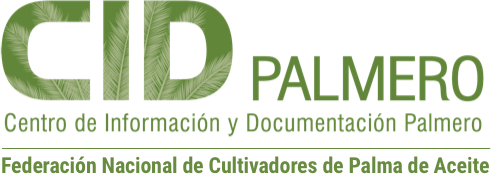A Real Case Study on the Physicochemical Changes in Crude Palm Oil (Elaeis guineensis) During the Deep-frying of Akara, Traditional Cowpea-paste Balls, in Brazil

Author
Feitosa, , S.
Boffo, E. F.
Batista, C. S. C.
Velasco, J.
Silva, C. S
Bonfim, R.
Almeida, D. T.
Estadisticas
Publicación:
Revista Palmas; Vol. 41 Núm. 1 (2020); 110-123
0121-2923
Revista Palmas; Vol. 41 Núm. 1 (2020); 110-123
0121-2923
Abstract
The objective of this study was to evaluate the physicochemical changes in crude palm oil during a real case of deep-frying of akara, cowpea-paste balls, fried and sold in the streets of Brazil. Discontinuous frying over five consecutive days, using 5-h frying a day, was performed according to traditional practices. The formation of polar compounds was evaluated by the IUPAC official method and by quick tests based on measures of physical properties, Testo 270 and Fri-check. In addition, 1H-NMR spectroscopy was applied to evaluate phy-sicochemical changes. The results showed that after 15-h frying the total content of polar compounds (TPC) exceeded the limit of 25 % established in most of the recommendations and regulations on heated oils. Such a level was reached quickly due to the high content of hydrolytic compounds present in the fresh oil and to the inappropriate use of blends of fresh and used oil in the oil replenishment. The two quick tests presented significantly lower values for TPC than the official method, probably due to the elevated hydrolysis of the fresh oil. In contrast, 1H-NMR results exhibited changes in the fatty acid composition which were similar to those provided by the common GC analysis. The use of crude palm oils of better initial quality and replenishment with fresh oil only are recommended to improve the quality of the oil absorbed by akara. El objetivo de este estudio fue evaluar los cambios fisicoquímicos del aceite de palma crudo durante un caso real de fritura de akara, pasta de alubia con forma redondeada cocinada y vendida en la calle en Brasil. Akara fue preparada de acuerdo con las prácticas tradicionales. Se aplicó fritura discontinua en cinco días consecutivos, fritando cinco horas al día. La formación de compuestos polares se evaluó mediante el método oficial IUPAC y a través de pruebas rápidas basadas en medidas de propiedades físicas, Testo 270 y Fri-check. Además, se aplicó espectroscopía 1H-RMN para evaluar cambios fisicoquímicos. Los resultados mostraron que después de 15 horas de fritura el contenido de los compuestos polares totales (CPT) excedía el límite del 25 % establecido en la mayoría de las recomendaciones y regulaciones sobre aceites calentados. Este nivel fue alcanzado rápidamente debido al alto contenido de com- puestos hidrolíticos detectados en el aceite fresco y al uso inapropiado de mezclas de aceite fresco y usado, utilizadas para la reposición de aceite. Las dos pruebas rápidas presentaron valores significativamente más bajos de CPT que el método oficial, probablemente debido a la elevada hidrólisis del aceite fresco. Por el contrario, los resultados de 1H-RMN exhibieron cambios en la composición de ácidos grasos que fueron similares a los proporcionados por el análisis común de cromatografía de gases (CG). Se recomienda el uso de aceites de pal- ma crudos de mejor calidad inicial y reposición únicamente con aceite fresco para mejorar la calidad de akara.
The objective of this study was to evaluate the physicochemical changes in crude palm oil during a real case of deep-frying of akara, cowpea-paste balls, fried and sold in the streets of Brazil. Discontinuous frying over five consecutive days, using 5-h frying a day, was performed according to traditional practices. The formation of polar compounds was evaluated by the IUPAC official method and by quick tests based on measures of physical properties, Testo 270 and Fri-check. In addition, 1H-NMR spectroscopy was applied to evaluate phy-sicochemical changes. The results showed that after 15-h frying the total content of polar compounds (TPC) exceeded the limit of 25 % established in most of the recommendations and regulations on heated oils. Such a level was reached quickly due to the high content of hydrolytic compounds present in the fresh oil and to the inappropriate use of blends of fresh and used oil in the oil replenishment. The two quick tests presented significantly lower values for TPC than the official method, probably due to the elevated hydrolysis of the fresh oil. In contrast, 1H-NMR results exhibited changes in the fatty acid composition which were similar to those provided by the common GC analysis. The use of crude palm oils of better initial quality and replenishment with fresh oil only are recommended to improve the quality of the oil absorbed by akara.
Palabras clave:
Akara
crude palm oil
deep-frying
Fri-check
NMR
Testo
akara
aceite de palma crudo
fritura
Fri-check
RMN
Testo
Akara
crude palm oil
deep-frying
Fri-check
NMR
Testo
akara
aceite de palma crudo
fritura
Fri-check
RMN
Testo


